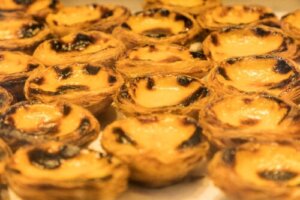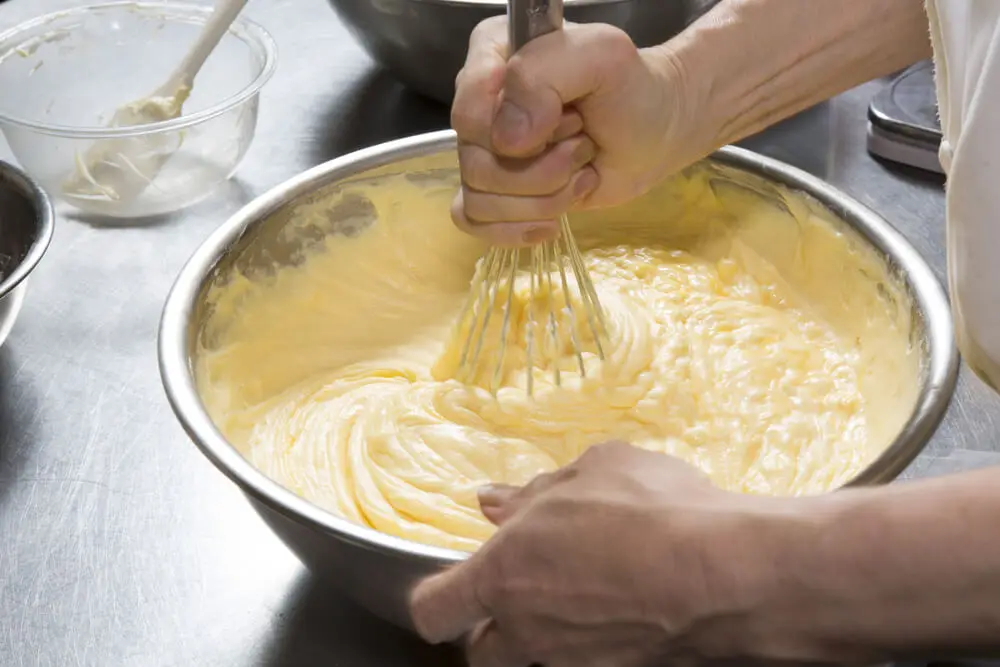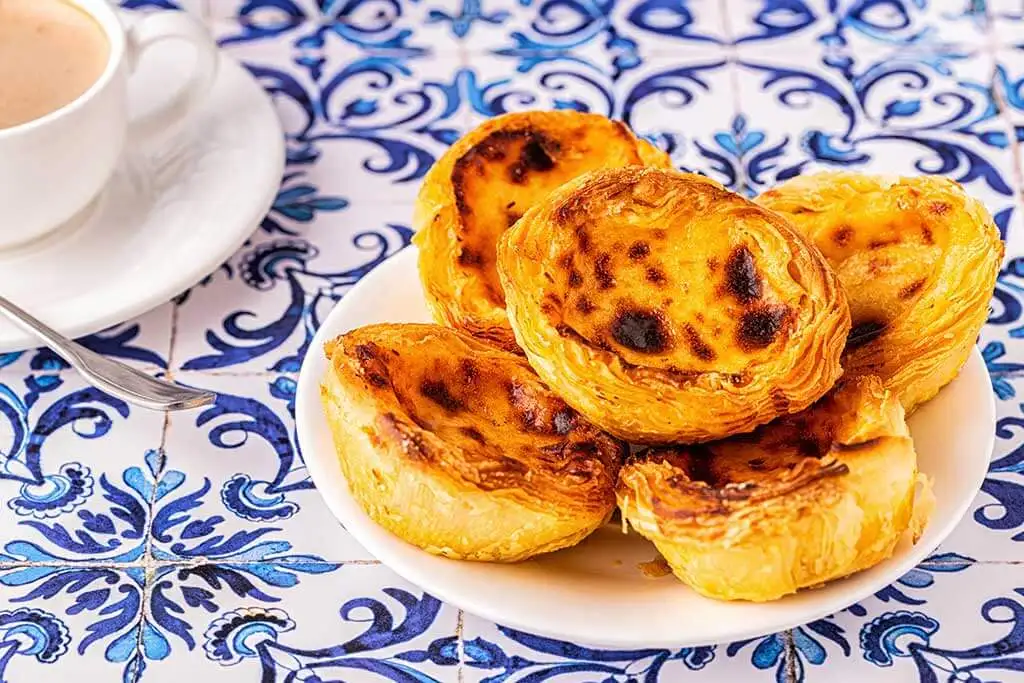Portuguese Belem Cakes: A Delicious Dessert


Written and verified by the nutritionist Saúl Sánchez Arias
Portuguese Belem cakes are one of the most typical sweets in that country. They’re baked in almost all pastry shops in Portugal. Although the recipes may vary from one place to another, they’re all based on a series of common ingredients.
We’re going to teach you how to prepare these delicacies at home so that you can surprise your visitors.
How to prepare Portuguese Belem cakes?
Before starting with the development of the Belem cakes recipe, it should be noted that preparing this type of dessert at home is a better option than buying the industrial version.
The latter will contain ingredients such as simple sugars, trans fats, and artificial additives. These products can alter the levels of inflammation in our bodies, increasing the risk of getting sick.
So, if you have the time and willingness to prepare these delicacies at home, don’t miss this recipe.

Ingredients
If you want to prepare some exquisite Portuguese Belem cakes at home, you’re going to need the following ingredients:
- 1 liter of whole milk
- 500 grams (20 oz) of white sugar
- 100 grams (4 oz) of wheat flour
- 12 egg yolks
- 600 grams (24 oz) of puff pastry dough
- The peel of half a lemon
- A stick of cinnamon
- Butter
- Metal molds
Step by step instructions – the dough
- Make rectangular cuts in the puff pastry dough.
- Roll into a cylinder shape, in portions of about 3 centimeters (just over an inch).
- Grease the molds to be used with the butter and place a cylinder of dough in each one. Normally, the best option is to use small egg flan molds, since it’s not always easy to find specific ones for these cakes.
- Prick the dough with a fork around the edge and let it rest for 20 minutes. Gradually, it’ll take the shape of the mold.
Step-by-step instructions – the cream
- Separate 200 milliliters of milk (nearly 7 fl oz) in a cup and add the flour. Whisk well and set aside.
- At the same time, heat the milk with the lemon peel and cinnamon in a saucepan to infuse.
- When it comes to a boil, gradually add the flour mixture while stirring.
- Once it comes to a boil again, remove the lemon peel and cinnamon stick.
- Add the sugar to the mixture.
- Gradually, the consistency of the mixture will thicken.
- Let it stand for 10 minutes after the heat is turned off.
- To continue, separate the yolks from the egg whites.
- Lightly whisk the yolks in a bowl and pass them through a sieve before combining them with the rest of the ingredients.
Another great recipe from Portugal: Bread of God: a Delicious Portuguese Dessert
Baking step-by-step
At this point, all that remains is to make up the cakes and bake them. This process is the simplest, but you need to follow the steps.
- Preheat the oven to 220 degrees Celsius (430 Fahrenheit) for 5 minutes.
- Arrange the molds on the baking tray.
- Fill them with pastry cream.
- Bake the cakes for 15 to 20 minutes until the surface is golden brown.
- Allow the cakes to cool a little and they are ready to eat.
You may also be interested in: 3 Low-Sugar Cupcakes for Breakfast
Contraindications of Belem cakes

Belem cakes are very tasty, but be careful with them if you have any metabolic pathology. In this case, it’s best to restrict the intake of simple sugars, as it could be counterproductive. Some options such as the ketogenic diet have proven to be a good alternative to improve glucose metabolism and manage the pathology well.
On the other hand, it’s true that a high consumption of simple carbohydrates could lead you to become overweight. This is evidenced by research published in the journal Current Diabetes Reports.
To avoid this problem, it’s advisable to base the diet mainly on the intake of fresh foods, limiting the presence of carbohydrates with a high glycemic index. However, if they appear occasionally, this shouldn’t be a cause for concern.
Finally, it should be noted that these nutrients may be necessary in certain contexts. One such example is when you carry out high-intensity exercise. They’re the main energy source for this type of activity. In addition, if combined with proteins of high biological value, they could help your recovery afterwards, according to a study published in Nutrients.
Prepare Portuguese Belem cakes at home
As you have seen, it’s possible to easily prepare Belem cakes at home. If you follow the steps we have given you, you’ll achieve a fantastic result from an organoleptic point of view. They’re excellent as an accompaniment to coffee or tea in the afternoon. They can even work as a dessert. Of course, always in moderation, as they do contain sugar.
Finally, remember that when you’re aiming to improve your overall health, it’s advisable to establish a series of good habits, in addition to taking care of your diet. It’s vital to practice physical exercise on a regular basis, focusing above all on strength work. In this way, internal inflammation will be kept under control.
All cited sources were thoroughly reviewed by our team to ensure their quality, reliability, currency, and validity. The bibliography of this article was considered reliable and of academic or scientific accuracy.
- Dashti, H. M., Mathew, T. C., & Al-Zaid, N. S. (2021). Efficacy of Low-Carbohydrate Ketogenic Diet in the Treatment of Type 2 Diabetes. Medical principles and practice : international journal of the Kuwait University, Health Science Centre, 30(3), 223–235. https://doi.org/10.1159/000512142
- Yoshida, Y., & Simoes, E. J. (2018). Sugar-Sweetened Beverage, Obesity, and Type 2 Diabetes in Children and Adolescents: Policies, Taxation, and Programs. Current diabetes reports, 18(6), 31. https://doi.org/10.1007/s11892-018-1004-6
- Alghannam, A. F., Gonzalez, J. T., & Betts, J. A. (2018). Restoration of Muscle Glycogen and Functional Capacity: Role of Post-Exercise Carbohydrate and Protein Co-Ingestion. Nutrients, 10(2), 253. https://doi.org/10.3390/nu10020253
This text is provided for informational purposes only and does not replace consultation with a professional. If in doubt, consult your specialist.








